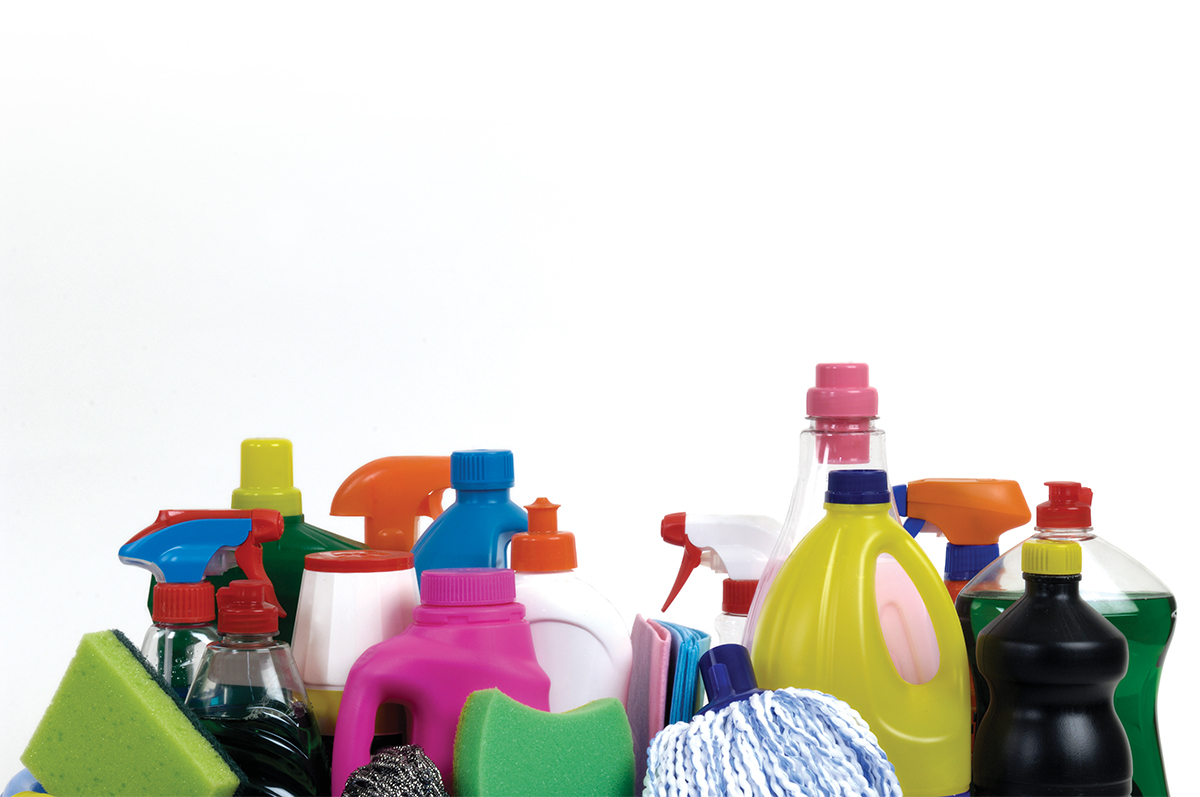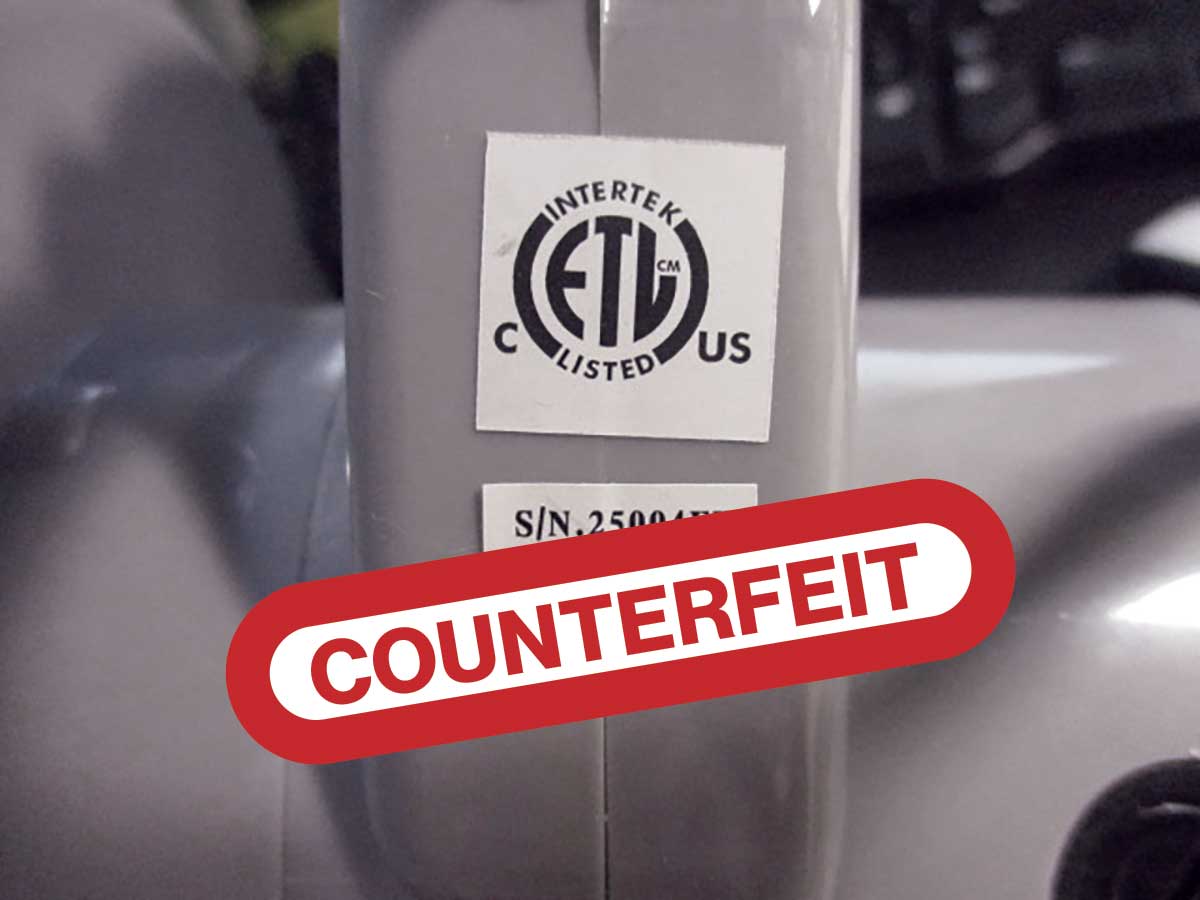Our industry is experiencing a challenge that jeopardizes safety: growth of counterfeit products. The act of counterfeiting is not new to our society and can, in fact, be traced to ancient times — the Romans fell victim to fake currency. Back in 1862, the U.S. Government established a national currency due to the counterfeiting problem at that time. Then in 1865, the Secret Service was established to stop the spread of forged money in the United States. Simply take a look at a few bills in your, or preferably a friend’s, wallet. You may see differences between bills of the same denomination. You may notice that the ten, twenty, fifty or, if really lucky, the one-hundred dollar bills have changed over time. In the “old days,” counterfeiting of coins was time consuming and labor intensive. A good craftsman would hammer out intricate details of target coins to be counterfeited on metal sheets. They would cut out each and pass them into circulation. Technology has made their job easier these days but, then again, we now have a different type of craftsman working hard to counterfeit a different type of target. The other form of counterfeiting that has grown by 10,000 percent over the past twenty years is the counterfeiting of well-known brands and products.
Counterfeit Products Defined
A counterfeit product is one that uses, without authorization, the trademark, service mark or copyright of another product, with intent to deceive prospective customers into believing that the product is genuine. Worldwide, counterfeiting is estimated to be 5 to 7 percent of world trade or about $600 billion each year. In the United States alone, that figure is $200–$250 million. Revenue “stolen” from legitimate companies reduces U. S. employment by 750,000 jobs a year, according to the International Anti-Counterfeiting Coalition (www.iacc.org).
Bargain priced knock-off luxury goods, bootleg movies, music trading and other similar examples work to desensitize the consumer. After all, it is hard to see the impact of purchasing or trading an item like music or movies. This desensitization has the risk of spilling over to other areas and products that have the potential to affect health and safety — the purchase and use of counterfeit electrical products. You may not be physically harmed by downloading or copying a movie but when that counterfeit extension cord or circuit breaker doesn’t perform as it should, you may be surprised at the consequences.
Counterfeit electrical products are being found in all areas of the world. Laws exist in many countries, but the difficulty in detection and the lack of enforcement are contributing factors to the proliferation of counterfeits. In 2009, U. S. Customs and Border Protection (CBP) reported that electrical products represented 13 percent of all counterfeit products seized — the second-highest total of any category. In 2008, CBP reported that it seized $286 million worth of counterfeit electrical products, a 43 percent increase over 2007 levels.
More than 80 percent of these sub-standard, unsafe products originate in China and have started finding their way to the United States, Canada and Western Europe while continuing to have a strong presence in Africa, Asia, Latin America and the Middle East. Free trade zones and the movement of counterfeit products across borders, however, disguise true origins of many products.
Industries’ Response
Many corporations have adopted a zero tolerance policy for counterfeiting, making the commitment to anti-counterfeiting technologies and programs. Some corporations have created global task forces to coordinate anti-counterfeit initiatives across global markets. Programs and methods intended to thwart counterfeiting have been established by many to influence and train customs groups, law enforcement, distributors and customers. Other efforts to combat counterfeiting include:
- Developing extensive anti-counterfeiting Web sites.
- Electrical industry manufacturers and governments have partnered worldwide to prevent the flow of counterfeit products at borders and to halt production at its source.
- Electrical manufacturers, suppliers and government have continued to collaborate on enforcement and best practices.
- Communication support for anti-counterfeiting initiatives has also been established.
Eaton Corporation, as an example, has implemented many enforcement actions with the assistance of trade organizations such as British Electrotechnical and Allied Manufacturers Association (BEAMA), National Electrical Manufacturers Association (NEMA), and the Quality Brands Protection Committee, and in cooperation with law enforcement authorities, including U. S. Customs, U. S. Immigration and Customs Enforcement, U. S. Department of Homeland Security, Chinese authorities and the Royal Canadian Mounted Police. Other manufacturers have taken similar actions. In fact, searches and seizures in China, the Middle East and Africa have been conducted over time. These programs have identified hundreds or possibly thousands of breakers and electrical components that have been seized and destroyed.
What Can I Do?
Identifying counterfeit products can be difficult, even for a manufacturer. In some cases it is necessary to disassemble or test the device to determine its legitimacy. As an inspector, installer, or general consumer, identifying a counterfeit product is even more of a challenge. The best way to protect yourself from counterfeit products is through avoidance. Take, for example, that Rolex watch selling for $100. If it sounds incredulous, it just may be worth a walk down to a jeweler who will take the watch apart and inspect the interior to determine if it is genuine. The venue in which you shop may present more of a chance to encounter a counterfeit product. One way to avoid counterfeit electrical products is to purchase them from the manufacturer’s authorized distributors or resellers. Always consider the following:.
- Stopping the sale of counterfeit products is everyone’s responsibility: the manufacturers, distributors, resellers (authorized and unauthorized) and customers alike.
- There is a higher risk of counterfeits if one cannot trace the path of commerce to the original manufacturer.
- If the price for a product seems too good to be true, there is a chance it’s a counterfeit.
- If you have reason to suspect you’ve purchased a counterfeit, contact the manufacturer.
The electrical industry is committed to leading initiatives to protect public health and safety and consumers must understand they are the key to success.
There are things you can look for though when you feel a product may be counterfeit. Some telltale signs of imitation products include:
- Missing or poor-quality labels
- Out-of-date product codes
- Packaging and stickers that legitimate manufacturers don’t use
- Absence of, or imitation, third-party testing certification labels from organizations such as Underwriters Laboratories (UL), the National Electrical Manufacturers Association (NEMA), the Canadian Standards Association (CSA), or other bodies that certify the quality and performance of electrical products.
Consequences
Counterfeit electrical products can overheat or cause short circuits, leading to fires, shocks or explosions that can cost people their lives and produce considerable property damage. Types of fraudulent products include:
- Control relays for industrial equipment
- Circuit breakers
- Receptacles
- Ground-fault circuit interrupters
- Power strips
- Surge suppressors
- Power cords
Using counterfeit electrical products can jeopardize the safety of everyone in and around the facility in which these products are installed.
Resources
Stopping the sale of counterfeit products is everyone’s responsibility — manufacturers, distributors, resellers (authorized and unauthorized) and customers alike. It can be difficult to discern if a product is counterfeit, but it can be helpful to remember the three Ps:
- Person: Do you know — and trust — the person who sold you the product? Is he authorized to sell the products?
- Place: Did you buy it at a place from which a recognized trader operates?
- Price: Was the price in line with what you normally pay?
It is important to know your resources in most situations and counterfeit products are again one of those instances. Some great information resources include the following:
http://www.counterfeitscankill.com: a joint effort of Electrical Contractor and TED magazine collaboration to bring the serious consequences of counterfeiting to the attention of professionals in our markets involved in the distribution, specification, purchasing and installation of electrical products.
www.cpsc.gov: The United States Consumer Products Safety Commission, an independent federal regulatory agency, works to protect the public against unreasonable risks of injuries and death.
www.esfi.org: The Electrical Safety Foundation International is a non-profit organization that promotes electrical safety in the home and workplace. This organization has published a lot on this topic and can be a great place to start when wanting to learn more.
www.nema.org: The National Electrical Manufacturers Association (NEMA) has approximately 450 member companies that manufacture products used in the generation, transmission and distribution, control, and end-use of electricity. NEMA has been working hard to combat counterfeiting. Anti-counterfeiting efforts of this organization include advocating the removal of counterfeit products from the supply chain, branding, and communicating with the U. S. government and with the public about the issues posed by counterfeit electrical products.
Working together on a global scale to prevent these unsafe counterfeit products from causing harm to people and property is essential. The attention we devote as professionals, and as members of our communities, to slowing the proliferation of counterfeit products can help to ensure maximum electrical safety levels for ourselves, and for future generations. Opportunities present themselves where we can educate others on the issues at hand. Spread your knowledge to others and ensure they don’t fall into the trap of purchasing and applying counterfeit products.
As always, keep safety at the top of your list and ensure that you and those around you live to see another day. If you have any tips or ideas you would like to share, please feel free to send them to me at thomasadomitrovich@eaton.com. I look forward to your input to these articles and guidance for future articles.









Find Us on Socials